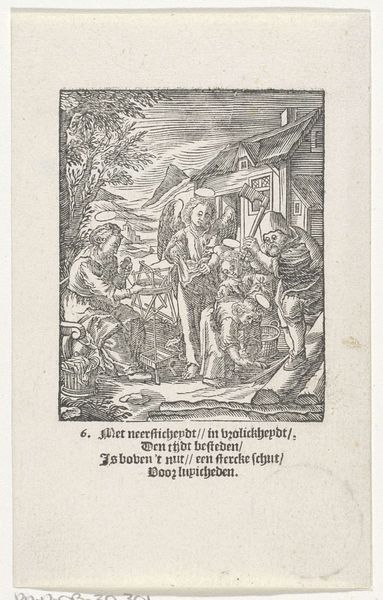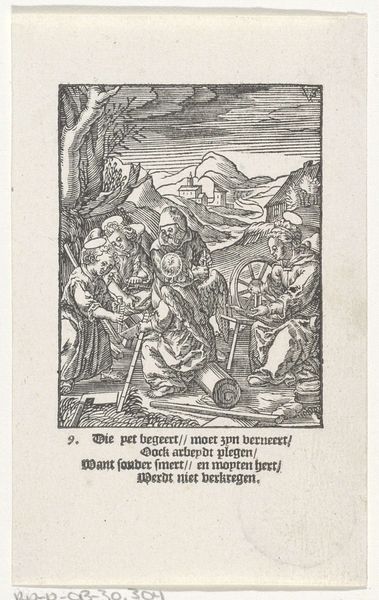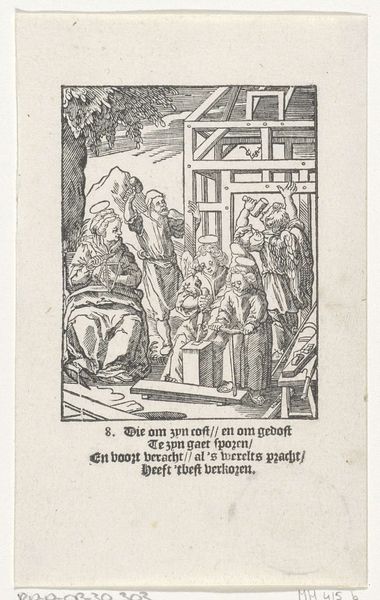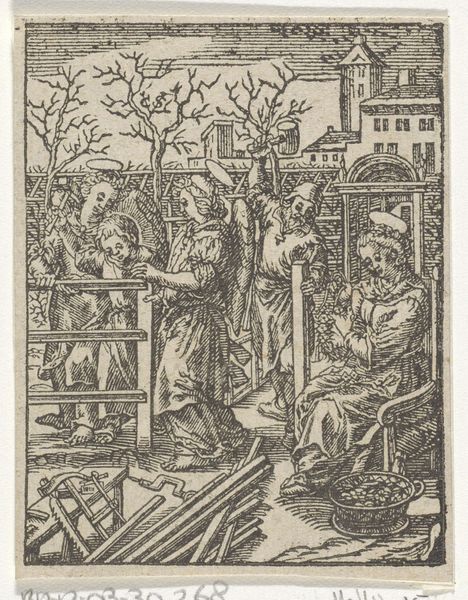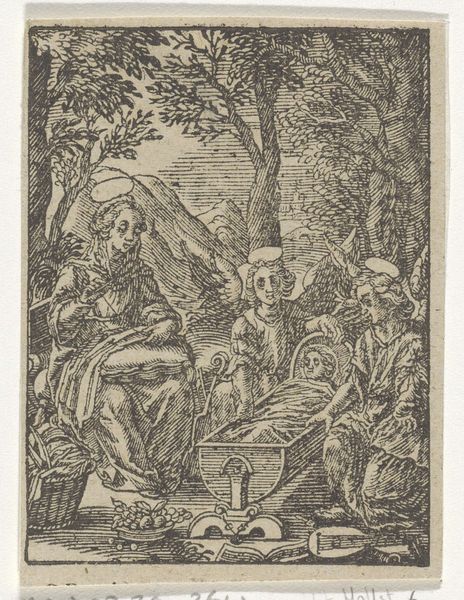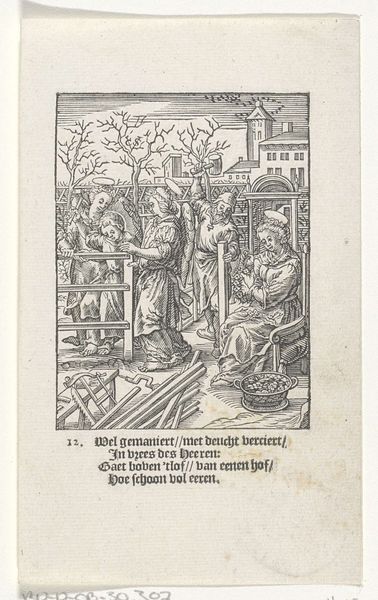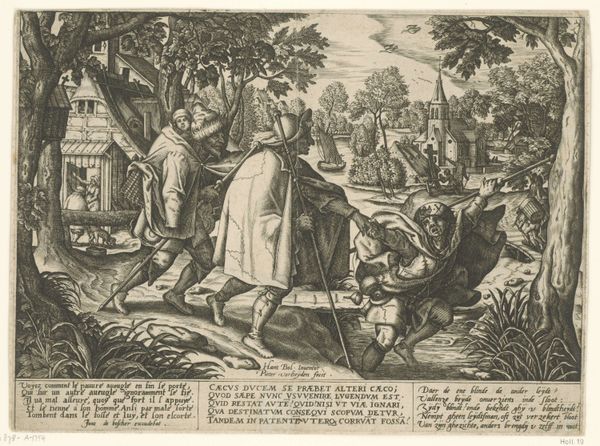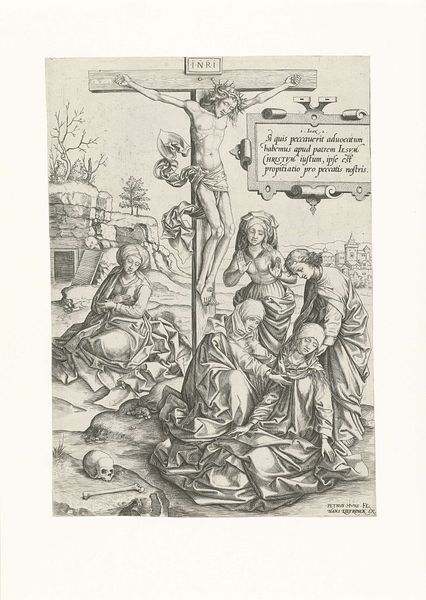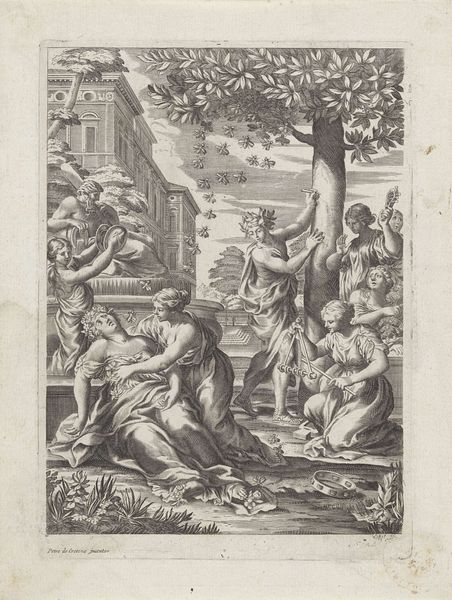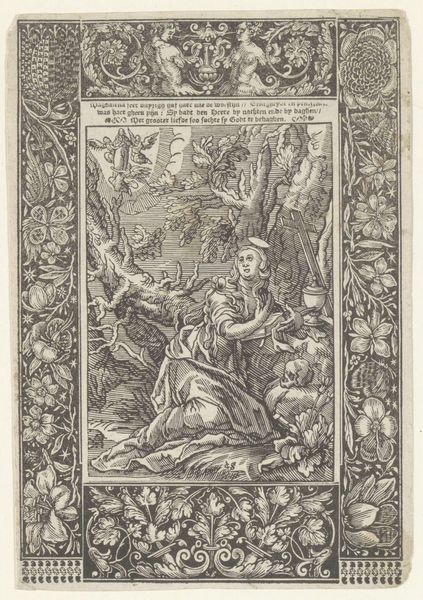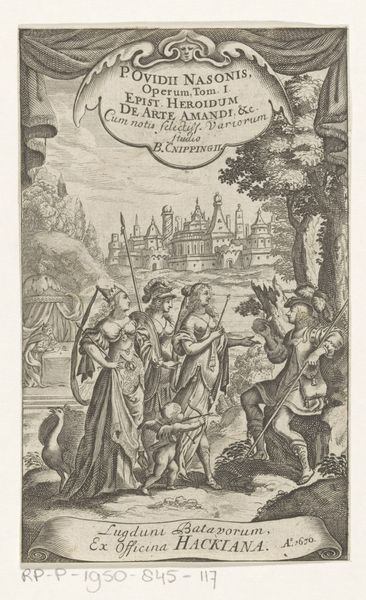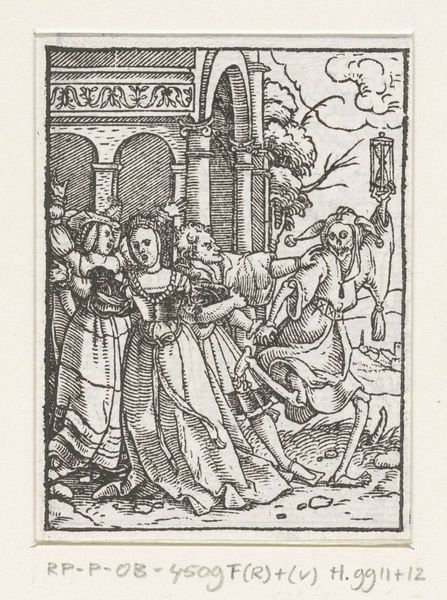
print, engraving
# print
#
pen sketch
#
old engraving style
#
figuration
#
line
#
genre-painting
#
northern-renaissance
#
engraving
Dimensions: height 137 mm, width 84 mm
Copyright: Rijks Museum: Open Domain
Curator: Immediately, the tight hatching and stark contrast grab my attention—there's an almost unsettling quality to the figures despite the apparent peacefulness. Editor: This print, titled "Christuskind slaapt in de wieg," or "Infant Christ asleep in the cradle" was created in 1617 by Christoffel van Sichem the Younger. It's an engraving. Curator: Yes, an engraving very much of its time! And given that title, we are looking at a very different portrayal from the warm sentiment we now expect to associate with scenes of motherhood. Van Sichem makes intriguing choices of symbolic composition: Mary, the cradle with baby Jesus, and attendants appear with objects from domestic life set against the landscape background. There’s such potent, raw emotion being presented in this scene. The basket and food placed underneath Mary remind us that she is responsible for nurturing life. Editor: From a formalist point of view, look how Sichem uses the density of the lines to suggest depth and volume. The varying levels of tonal shading achieved in such a graphic, spare fashion is extremely engaging. Curator: Absolutely, but it’s the *arrangement* of forms, the composition itself, which guides meaning and impacts us. The haloed mother on the left and the angels arranged on the right establish visual relationships with corresponding values, expressing that Christ belongs not just to a singular idea of maternal tenderness, but instead resides among the cosmic order! And how that central post holding the cradle echoes upward, like a blossoming plant! Editor: It makes a wonderful connection between the physical world of domestic life and the elevated realms of sacred space. These lines almost vibrate with meaning. What might feel to modern eyes a simple image reveals a beautiful underlying tension, a conversation happening between light and dark, between what is shown, and what is only alluded to. Curator: The tension within visual harmony is not meant to be easily reconciled—but instead is felt across centuries.
Comments
No comments
Be the first to comment and join the conversation on the ultimate creative platform.
